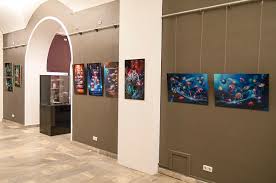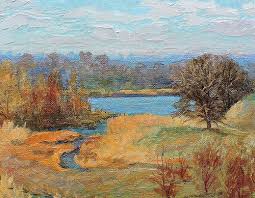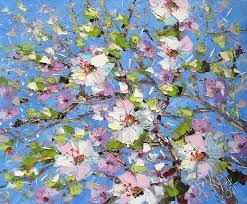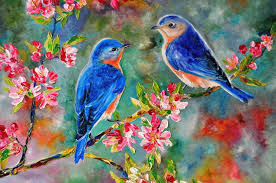artist finished in a certain period
MASTERPIECES OF PASTEL FROM FUNDS OF THE TREYAKOV GALLERY (part 2)
 In Russia, pastel technique appeared in the second half of the XVIII century, but never reached such popularity as in Europe. The first pastors known to us were invited foreign masters – G.-F. Schmidt, V. Eriksen, Gagelgans, I.-G. Schmidt, I. Bardou and their younger contemporary K. Bardou. Many of them were portrait painters. Their works are executed at a good professional level, in the tradition of cabinet portraiture. They are characterized by a picturesque solution, they carefully wrote out individual features, finely modeled faces, powdered wigs, carefully detailed clothing, thin foam of lace, the mysterious sparkle of orders, the gentle shimmer of tones typical of pastels. In these small, often paired, family portraits that once adorned the walls of Russian noble nests, live human faces, famous and unknown, appear in front of the viewer – people who have gone down in history but have not sunk into oblivion, thanks to artists who have preserved their appearance for posterity. Continue reading
In Russia, pastel technique appeared in the second half of the XVIII century, but never reached such popularity as in Europe. The first pastors known to us were invited foreign masters – G.-F. Schmidt, V. Eriksen, Gagelgans, I.-G. Schmidt, I. Bardou and their younger contemporary K. Bardou. Many of them were portrait painters. Their works are executed at a good professional level, in the tradition of cabinet portraiture. They are characterized by a picturesque solution, they carefully wrote out individual features, finely modeled faces, powdered wigs, carefully detailed clothing, thin foam of lace, the mysterious sparkle of orders, the gentle shimmer of tones typical of pastels. In these small, often paired, family portraits that once adorned the walls of Russian noble nests, live human faces, famous and unknown, appear in front of the viewer – people who have gone down in history but have not sunk into oblivion, thanks to artists who have preserved their appearance for posterity. Continue reading
ART UNIONS AND CREATIVE UNIONS OF RUSSIA ON THE TURN OF THE XIX-XX CENTURIES (part 1)
 Abramtsevsky (Mamontovsky) art circle – the so-called Representatives of the creative intelligentsia, mainly Moscow, united around the famous businessman and philanthropist S.I. Mamontov. Meetings and meetings of artists and art lovers took place in Mamontov’s house on Spassko-Sadovaya Street, and in the summer, in the Abramtsevo estate near Moscow near Sergiev Posad. Mamontov financially helped artists, supported them with many creative endeavors. The circle existed in 1878-93, while it was never an official society or an art group. Artists often came to Abramtsevo for the whole summer with their families. Here they could work and communicate. In the Abramtsevo circle, the study of Russian history and culture was combined with the desire to revive the traditions of folk art. The estate organized workshops for the revival of ancient art crafts (wood carving, majolica, sewing). Continue reading
Abramtsevsky (Mamontovsky) art circle – the so-called Representatives of the creative intelligentsia, mainly Moscow, united around the famous businessman and philanthropist S.I. Mamontov. Meetings and meetings of artists and art lovers took place in Mamontov’s house on Spassko-Sadovaya Street, and in the summer, in the Abramtsevo estate near Moscow near Sergiev Posad. Mamontov financially helped artists, supported them with many creative endeavors. The circle existed in 1878-93, while it was never an official society or an art group. Artists often came to Abramtsevo for the whole summer with their families. Here they could work and communicate. In the Abramtsevo circle, the study of Russian history and culture was combined with the desire to revive the traditions of folk art. The estate organized workshops for the revival of ancient art crafts (wood carving, majolica, sewing). Continue reading
HISTORY OF LANDSCAPE GENRE DEVELOPMENT (part 1)
 Translated from French, the word “landscape” (paysage) means “nature”. This is what the genre is called in fine art, the main task of which is the reproduction of natural or human-modified nature.
Translated from French, the word “landscape” (paysage) means “nature”. This is what the genre is called in fine art, the main task of which is the reproduction of natural or human-modified nature.
In addition, the landscape is a specific work of art in painting or graphics, showing the viewer nature. The “hero” of such a work is a natural motif or a natural motif invented by the author.
Elements of the landscape can be found already in cave art. In the Neolithic era, primitive masters schematically depicted rivers or lakes, trees and stone blocks on the walls of caves. On the Tassilin-Ager plateau in the Sahara, drawings were found with scenes of hunting and driving herds. Continue reading



